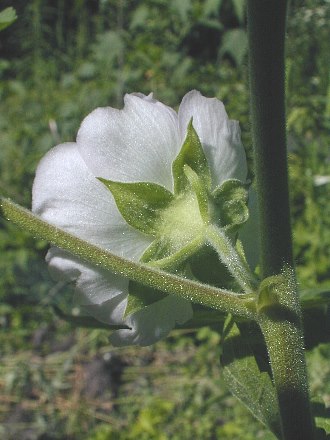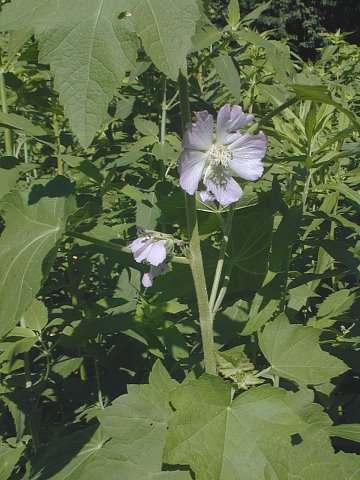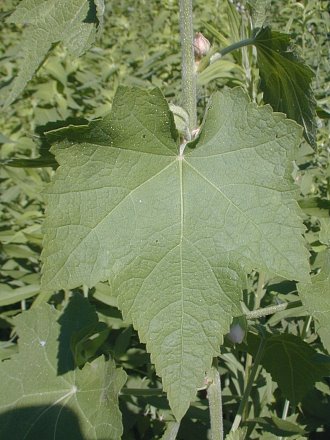
The blooming period occurs during the summer, lasting about 2 months. Individual flowers are short-lived and slightly fragrant. Afterwards, each fertile flower is replaced by a ring of carpels containing the seeds. The carpels are reniform and narrowly wedge-shaped; their outer edges are pubescent. Each carpel contains 2-4 seeds (about 3 mm. in length). The root system consists of a short stout taproot and rhizomes. Vegetative colonies of plants occasionally develop from the rhizomes.
Cultivation: The preference is full or partial sun, moist to mesic conditions that are well-drained, and soil containing some loam or rocky material. Germination of the seeds requires scarification of the seed coat through mechanical means or by fire. In a dormant state, the seeds can be remain viable for up to 50 years. Cross-pollination with genetically distinct plants is required for the production of viable seeds.

Range & Habitat: The native Kankakee Mallow has been found only in Kankakee County, where it is rare and state-listed as 'endangered' (see Distribution Map). Habitats consist of rocky riverbanks, woodland edges, open rocky woodlands, and abandoned fields. In all of these habitats within Illinois, the underlying bedrock of the thin soil consists of dolomite. Occasional wildfires are beneficial in maintaining populations of Kankakee Mallow as they stimulate the germination of seeds and reduce competition from woody vegetation. This wildflower has been cultivated successfully in gardens.
Faunal Associations: Very little is known about floral-faunal relationships for this rare wildflower. The flowers are probably cross-pollinated by various long-tongued and short-tongued bees. White-Tailed Deer and other mammalian herbivores readily browse on the foliage. It may be necessary to place wire cages over individual plants in order to protect them from such animals.

Photographic Location: A flower garden in Urbana, Illinois.
Comments: The Kankakee Mallow has attractive flowers and foliage. This rare wildflower is endemic to Illinois, although an adventive population has been found in Indiana near a railroad. It is thought that members of a Chicago wildflower society may have established this population by throwing seeds of the Kankakee Mallow out of the window of a passing train during the early 20th century. There are some differences of opinion regarding the taxonomic classification of the Kankakee Mallow. It has been classified as the typical variety of a more western species, Iliamna rivularis (Mountain Hollyhock), and sometimes it is considered the same species as the more eastern Iliamna corei (Peter's Mountain Mallow). This last species was discovered on a sandstone outcrop in Virginia, where it was under attack by feral goats. The Kankakee Mallow differs from Peter's Mountain Mallow by having flowers that are fragrant. In general, mallows of the Iliamna genus differ from many other mallows by having 3 linear floral bracts behind the sepals of each flower.